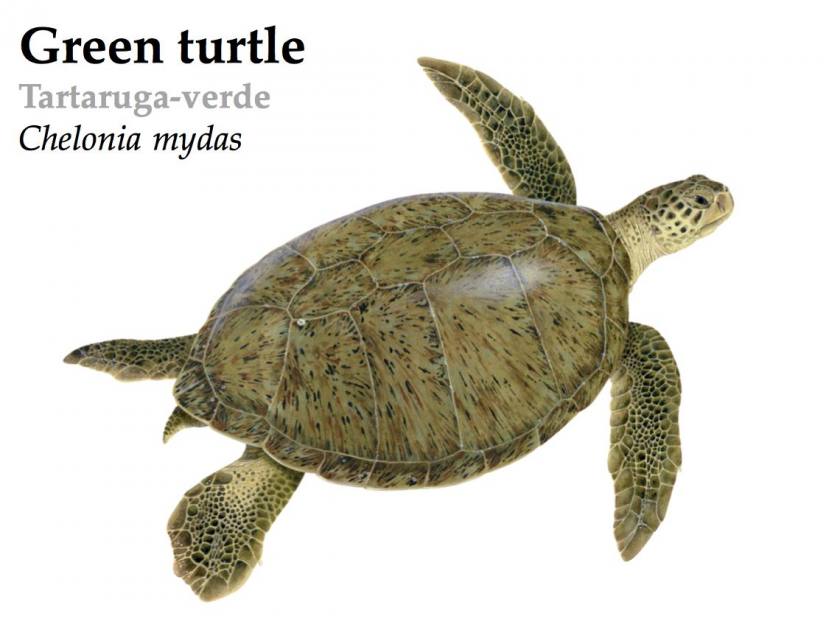
The Green Sea Tutle’s name derives from the green fat that is found under their carapace. In some areas in the Pacific, the Green Sea Turtle is also named the Black Sea Turtle.
CHARACTERISTICS
Latin name: Chelonia mydas
Order: Testudines
Family: Cheloniidae
Length: up to 120 cm
Weight: up to 135-160 kg
IUCN Status: Endangered
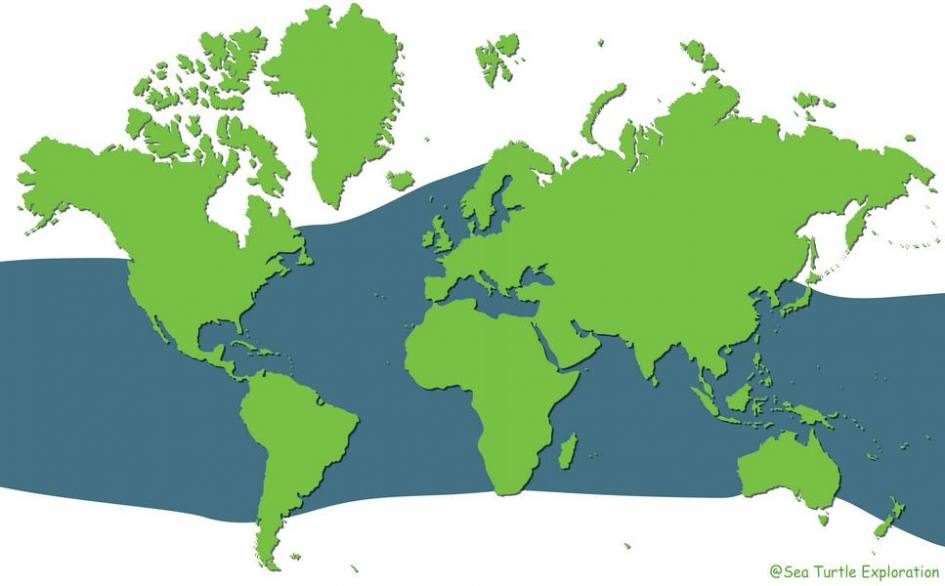
DESCRIPTION
- Coloration: Greenish-black coloration
- Head Shape: Rounded head
- Scutes: 4 pairs on the carapace and 1 prefrontal pair
- Carapace: Bony without ridge, smooth domed with teardrop shape
HABITAT
Green Sea Turtles are mostly in coastal areas. Rarely observed in open ocean. It is very rare to observe them in the Azores also due to their shy beahavior.
DIET
Green Sea Turtles are mainly herbivorous. They feed on seagrass, mangrove leaves and shoots, jellyfish and algae. In the Azores,adults are mostly associated with shallow coastal areas where algae are more abundant. Feeding dives are quite short, while they can dive to rest on the sea bottom for several hours.
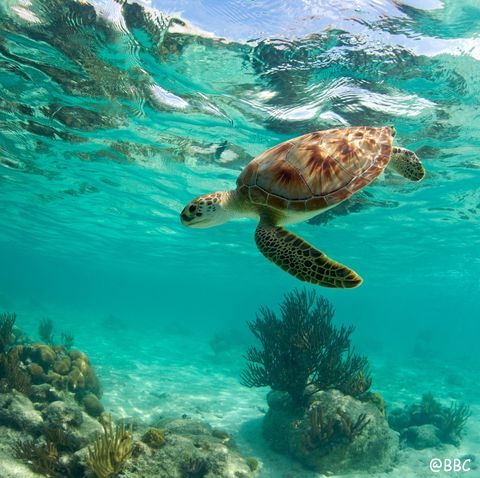
REPRODUCTION & MIGRATION
Green turtles nest at intervals of about two years, with wide year-to-year fluctuations in numbers of nesting females. Nests between 3 to 5 times per season. They lay an average of 115 eggs in each clucth, with the eggs incubating for about 60 days. After mating in winter, only females come ashore to nest, and often return to nest on the beach where they were born. Males rarely return to land after crawling into the sea as hatchlings.
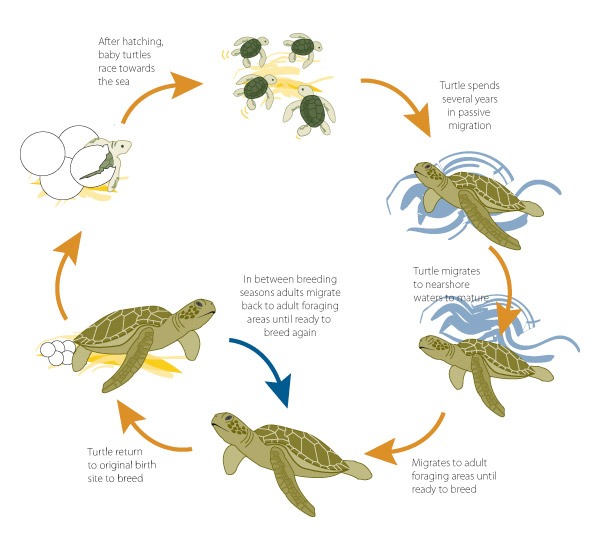

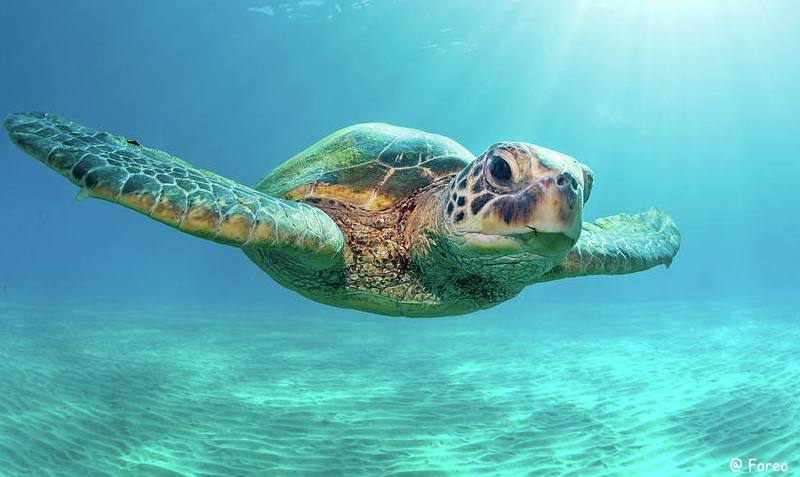











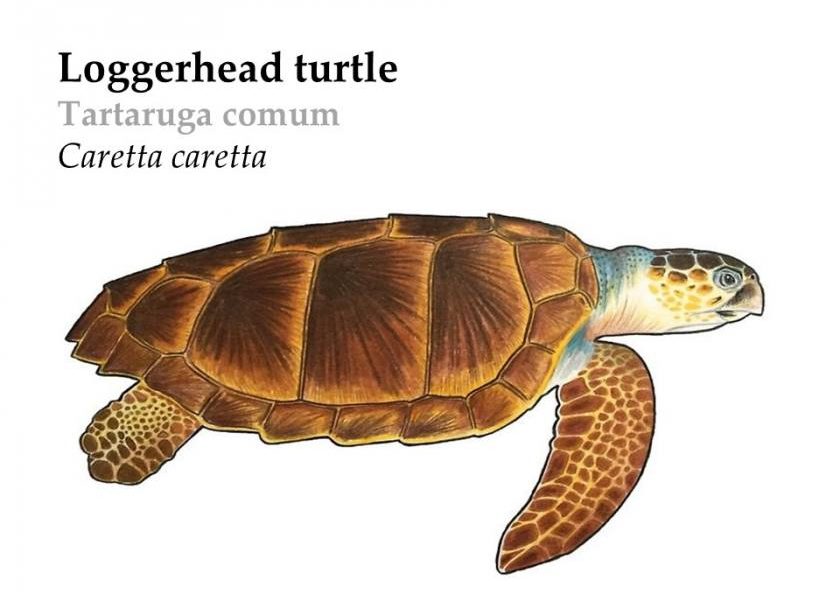
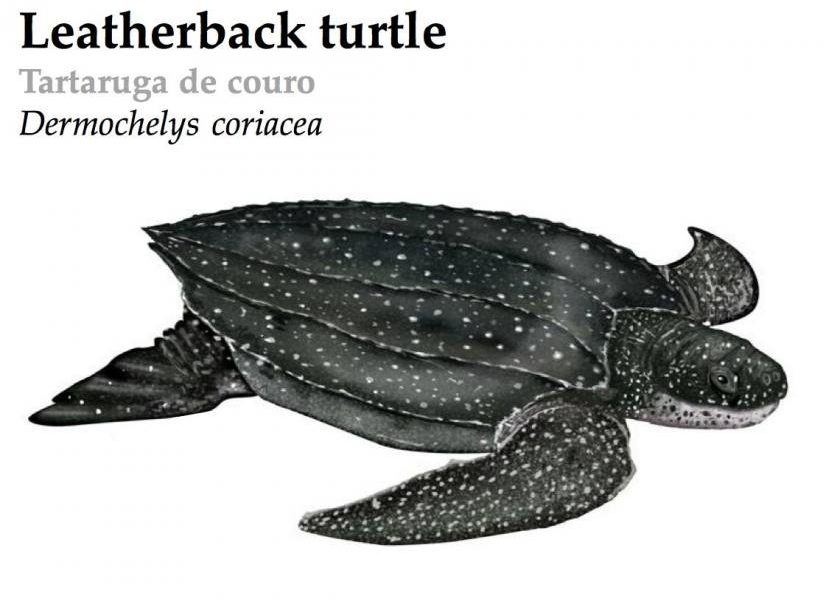



Your thoughts on this?